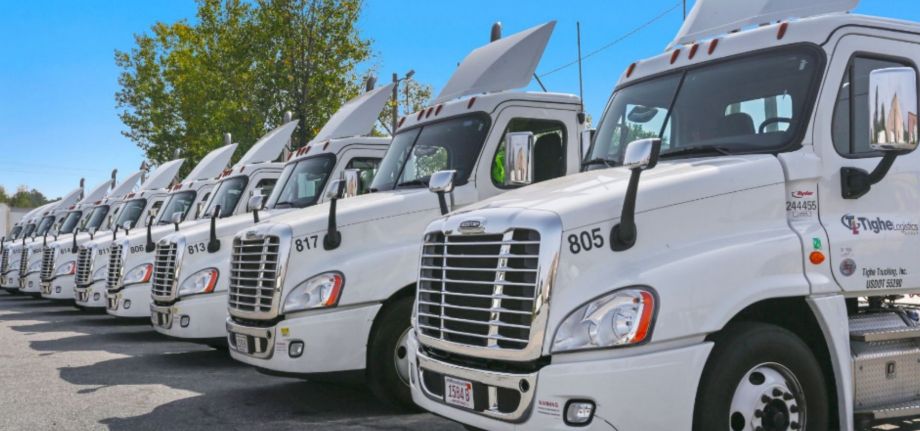
TL;DR: Full truckload (FTL) shipping is best for full trailers, high-value freight, and tight delivery windows. Less than truckload (LTL) works well for smaller loads, recurring shipments, and more flexible timelines. If speed and control are your priority, FTL is the better choice. If you’re looking to save on partial loads, LTL offers more flexibility. In regions like New England, route complexity may matter just as much as volume. An experienced 3PL partner will help you find the best mode and optimize performance.
Choosing between LTL and full truckload shipping isn’t always straightforward. You might be balancing load size, delivery timelines, cost targets, or all three at once. And with so many variables in play, the wrong choice can quietly eat into your margins or slow down your supply chain.
This guide breaks down the key differences between LTL vs full truckload, helping you decide which option fits your freight, your operation, and your goals. Whether you’re shipping regionally, nationally, or exploring better options for New England truckload delivery, you’ll walk away knowing exactly what to use and when.
- What Is Full Truckload (FTL) Shipping?
- What Is Less Than Truckload (LTL) Shipping?
- Key Differences Between LTL and FTL
- LTL Shipping Benefits
- Full Truckload Shipping Benefits
- When to Use LTL
- When to Use Full Truckload
- New England Truckload Considerations
- LTL vs FTL: A Side-by-Side Comparison
What Is Full Truckload (FTL) Shipping?
Full Truckload (FTL) shipping is when a single shipper uses the entire trailer for their freight. The load moves directly from origin to destination with no stops or transfers along the way.
It’s commonly used in industries like retail, manufacturing, food, and pharmaceuticals, especially when freight is specialized, high-value, or bulky. Full truckload is often the fastest and most secure way to move freight point-to-point.
What Is Less Than Truckload (LTL) Shipping?
Less than truckload (LTL) shipping combines freight from multiple shippers on the same truck. Each shipment occupies only a portion of the trailer. Freight is typically routed through regional terminals and may be transferred between trucks before reaching the final destination.
LTL is a popular choice for recurring small shipments, eCommerce replenishment, and businesses without consistent full-truck volumes.
Key Differences Between Less Than Truckload vs Full Truckload
If you’re weighing LTL vs full truckload, here’s how they differ in real-world operations:
- Cost: LTL is more affordable for smaller shipments, while FTL becomes more cost-effective as load size increases.
- Transit Time: FTL is faster and more direct. LTL shipments often take longer due to multiple stops and transfers.
- Damage Risk: LTL has more handling, increasing the risk of damage. FTL reduces handling and is safer for fragile goods.
- Flexibility: LTL offers flexibility for mixed freight sizes and variable shipping schedules. FTL requires larger, more consistent volumes.
- Space Use: LTL allows you to ship what you need, when you need it. FTL maximizes efficiency when you can fill the trailer.
Types of FTL and LTL Services
Both full truckload (FTL) and less than truckload (LTL) shipping come with service options tailored to different freight needs and delivery models.
Dedicated contract carriage is often used in FTL, giving shippers consistent capacity with trucks and drivers assigned to their freight only. This setup offers control, reliability, and brand-specific service—especially useful for high-volume or time-sensitive operations.
Freight consolidation is common in LTL, where smaller shipments from multiple customers are combined into a single trailer. It lowers costs and increases efficiency without requiring you to fill a full truck on your own.
Pool distribution works well for regional or high-frequency deliveries. Freight is shipped in bulk to a central hub and then distributed locally, combining the speed of FTL with the flexibility of LTL.
For freight that requires extra care, temperature-controlled or reefer trucking is available in both LTL and FTL formats. Whether you’re moving perishables, pharmaceuticals, or sensitive materials, reefer trailers help maintain product integrity from pickup to final delivery.
LTL Shipping Benefits
Less than truckload gives growing shippers more flexibility. If you’re not filling a full trailer, LTL lets you move product without waiting to build up volume.
It’s a great fit for loads under 15,000 pounds. You pay only for the space you use, which helps cut down on wasted capacity and overpaying for empty trailer space.
Because you’re shipping smaller quantities more often, there’s less need to store excess inventory at your facility. That can ease pressure on warehouse space and reduce holding costs.
LTL also works well when your shipping patterns change from week to week. Whether it’s a small restock or a sudden surge in orders, you can move freight without locking into rigid scheduling.
And since freight is consolidated with other shipments, you’re reducing the number of trucks on the road, which can shrink your carbon footprint without extra effort.
If speed isn’t your top concern and you’re moving less than a full load, LTL gives you a cost-effective, flexible way to keep freight flowing.
Full Truckload Shipping Benefits
With full truckload, you’ll generally find better timing control. Your freight moves straight from point A to point B. No stops, transfers, or repacking. That direct route means faster delivery and fewer chances for something to go wrong.
There’s also less risk of damage or loss. With FTL, your shipment stays on the same trailer with the same driver the entire trip. If you’re moving fragile, high-value, or temperature-sensitive products, that consistency can make a big difference.
You also get more control over scheduling. Since you’re using the full trailer, pickup and delivery windows are easier to plan. For shippers with tight timelines, full trailers, or freight that needs extra care, FTL offers reliability that’s hard to match.
When to Use LTL Shipping
Knowing when to use LTL shipping depends on your load size, timing, and shipment frequency. It’s a good fit if:
- You’re shipping under 15,000 lbs or fewer than 12 pallets
- You don’t need strict delivery windows
- Your freight varies in size or frequency
- You’re restocking smaller inventory SKUs regularly
When Full Truckload Makes More Sense
FTL makes sense when:
- You can fill the trailer or want dedicated use
- Freight needs to go to a single location without stops
- The product is fragile, perishable, or high-value
- You’re working under tight or guaranteed delivery timelines
New England Truckload Considerations
Tight urban corridors, older infrastructure, and seasonal weather can slow down less-than-truckload shipments in New England. Delays aren’t uncommon, and timing can get unpredictable when freight is transferred multiple times.
In many cases, full truckload service is a better fit. Direct routing cuts out extra stops and helps avoid the risk of rerouting or missed windows. It’s often easier to deliver into congested areas with a dedicated truck that’s scheduled around your freight only.
That said, LTL can still work well. With the right New England 3PL provider, you can gain access to optimized routes and consistent carrier partnerships.
The best mode isn’t just about freight size or cost. It’s also about how well your shipping strategy fits the terrain, infrastructure, and complexity of the lanes you’re running.
LTL vs FTL Shipping: A Side-by-Side Comparison
| LTL Shipping | Full Truckload Shipping | |
|---|---|---|
| Cost | Lower for small shipments | Better value for full trailers |
| Transit Time | Slower, multiple stops | Faster, direct route |
| Handling Risk | Higher | Lower |
| Ideal Use | <15,000 lbs, flexible timing | High volume, time-sensitive |
| Customization | Limited | Full control over schedule |
Ready to Find the Best Shipping Method?
Each mode offers unique strengths depending on your freight profile, volume, and delivery needs. Choosing between LTL and full truckload isn’t just about cost—it’s about getting the right fit for your freight, your timeline, and your goals.
Let’s talk through your freight profile and delivery needs to find the shipping strategy that works best for you.
Have More Questions?
What is the main difference between LTL and full truckload shipping?
The key difference between LTL and FTL shipping lies in how freight is transported. Less than truckload (LTL) shipments share trailer space with other freight, while full truckload (FTL) shipments use the entire trailer for one customer. Understanding the difference between LTL and FTL helps shippers choose the most cost-effective and efficient option based on freight volume and urgency.
When should I use LTL shipping?
Knowing when to use LTL shipping is critical for controlling costs. LTL is ideal for shipments under 15,000 pounds or fewer than 12 pallets. It works well when delivery timelines are flexible, freight volume varies, or you’re restocking smaller quantities regularly.
Is full truckload more expensive than LTL?
FTL is typically more expensive per load but often more cost-effective for larger shipments. LTL shipping is more affordable for small, partial loads. Choosing between LTL vs full truckload depends on the size, urgency, and frequency of your shipments.
What if I’m shipping LTL or truckload in New England?
New England truckload logistics come with regional challenges—tight roadways, seasonal weather, and urban congestion. FTL shipping helps avoid rerouting and delays, making it a strong choice for time-sensitive freight. LTL still works in New England when supported by strong regional 3PL consolidation.



